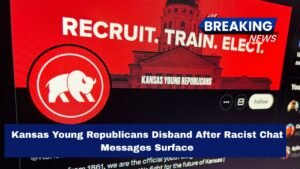In this article, we explain how Kansas Attorney General Kris Kobach has asked a federal court to remove Governor Laura Kelly from a lawsuit. The lawsuit is about the Trump administration cutting off federal funding to several states.
We will cover why Kobach took this step, what the governor’s office said, and what may happen next. This article is written in simple and natural language, so a 15-year-old can understand. Important words are marked in bold, and a clear table makes things easier to follow.
What’s Going On?
Kansas Attorney General Kris Kobach has asked a federal court to remove Governor Laura Kelly from a legal case. The case involves states trying to stop the Trump administration’s decision to cut federal grant money that had been promised by Congress.
Who Joined the Lawsuit?
Governor Kelly joined forces with 22 states and the District of Columbia in this lawsuit. They are challenging the Office of Management and Budget and a new office called DOGE (Department of Government Efficiency).
These federal bodies ended billions of dollars in funding for areas like violent crime, education, public health, clean drinking water, research, student meals, and unemployment benefits.
Why Does Kobach Want Kelly Out?
Kobach argues that, under Kansas law, only the Attorney General has the power to represent Kansas in federal court lawsuits. He says Governor Kelly doesn’t have the legal authority to join the case. He filed what is called an amicus brief—a document that explains why the court should remove her.
At a Legislative Coordinating Council meeting, which includes five Republicans and two Democrats, Kobach asked for support. The council voted along party lines that Kelly is breaking Kansas law and should be removed from the lawsuit.
What Does the Governor’s Office Say?
A spokesperson for Governor Kelly, Olivia Taylor-Puckett, responded. She said Kelly joined the lawsuit in her official role as governor. The Kansas Constitution gives the governor “supreme executive power” and responsibility for enforcing laws, which includes taking legal action when needed.
Kelly’s office said the attorney general was asked many times to join but refused. The governor acted to protect states’ rights and what is best for Kansas, especially after “millions of dollars” were cut—money that helped Kansas farmers, child education, and natural disaster relief.
What Did Kobach Say Next?
Kobach told the council that federal regulations let agencies cut grants if they don’t match the agency’s priorities. He said courts probably can’t force agencies to spend money. He said legal experts expect the states to win in the first court, but likely lose if the case goes to appeals courts.
Big Picture: What Is the Lawsuit About?
All states in the lawsuit argue that the regulation used to cut the funds has never been used to take money away just because an agency changed its mind. They say the regulation does not support broad power for agencies to cancel grants on a whim.
| Who / What | Role or Issue |
|---|---|
| Kris Kobach | Kansas Attorney General. Wants Gov removed. |
| Laura Kelly | Kansas Governor. Joined multi-state lawsuit. |
| Lawsuit | Challenge funding cuts by Trump admins. |
| Funding Cuts | Affected crime, schools, health, farmers. |
| Legal Debate | Who can represent Kansas in federal court? |
| Court Filing | Amicus brief by Kobach explaining removal. |
| Governor’s Reply | Says Kansas Constitution allows her action. |
| Risk | Win first, but likely lose on appeal. |
In simple terms, this issue is about who has the legal power to speak for Kansas in a case against the Trump administration for cutting off federal funding.
Attorney General Kris Kobach says Kansas law gives him that power, not the governor. Meanwhile, Governor Kelly’s office says the state constitution clearly lets her act to protect the state.
At the heart of the case are serious matters—money for schools, health care, public safety, and farmer support. As the court decides who can rightly represent Kansas, the people of the state wait to see if the funds will return.
This dispute matters because it shows how different parts of government must share power—and sometimes they clash—even when helping save vital programs.
The outcome could shape how governors or attorneys general can act in future fights over funding, rights, and responsibilities. It’s not just about money—it’s about who gets to stand up for the people when things get tough.




